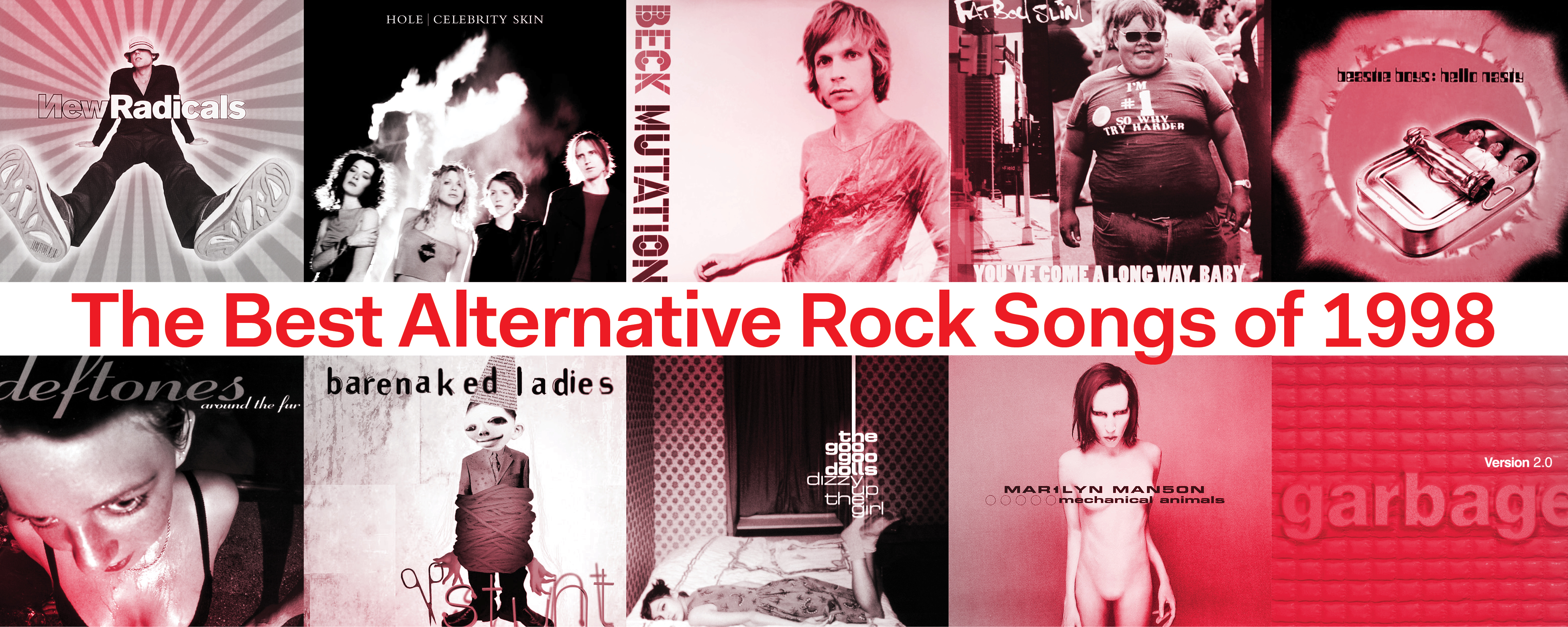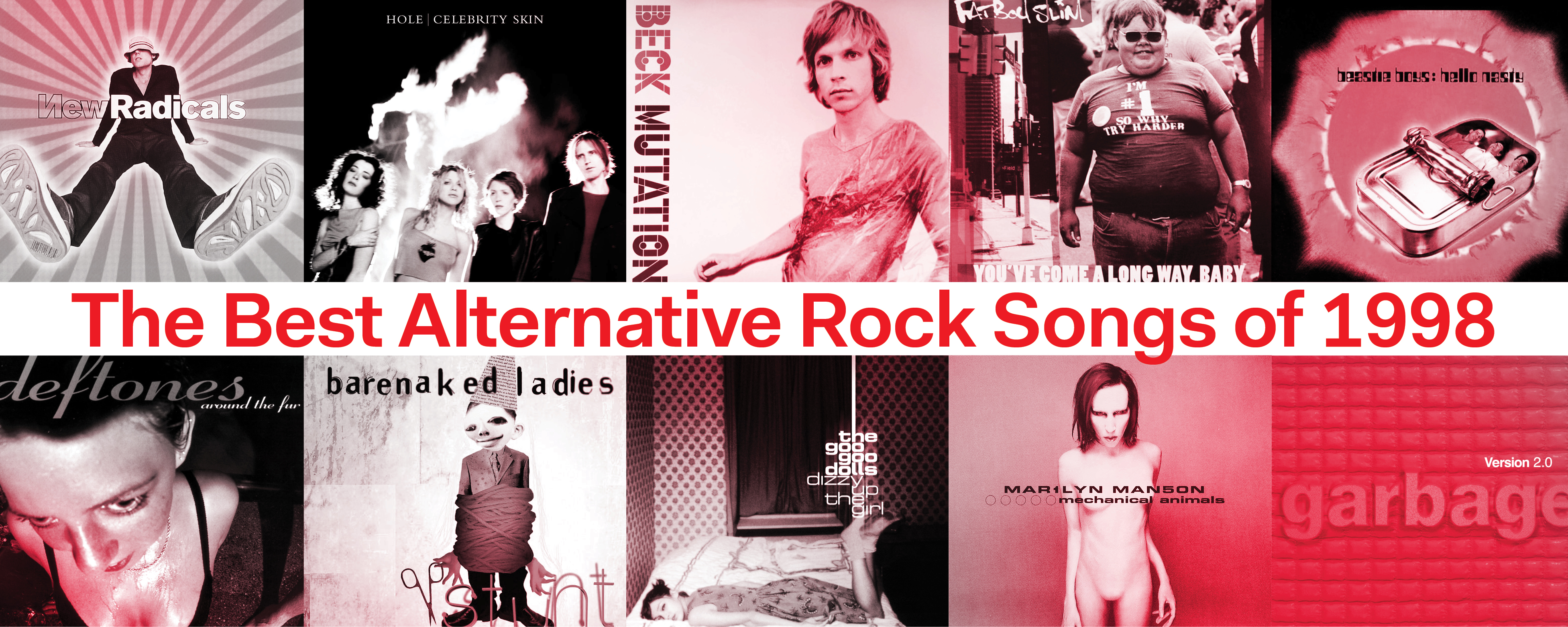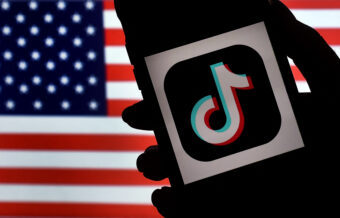80. Creed – “One”
If moving to Tallahassee helped Jim Morrison become a star, Scott Stapp figured, it could do the same for him. And by God, he was right. “One” was the final and biggest single off Creed’s debut My Own Prison, recorded for a reported six grand. It sure sounds like it: Mark Tremonti’s flanging on the bridge sounds exactly like waking up midflight with a head cold. He smuggles some divebombs into the outro, but it’s Stapp’s grunting refrain (“I feel angry, I feel helpless/Wanna change the world, yeah”) that made this a hit. They’d score even bigger with later dirtbag absolution anthems, but “One”’s bizarre anti-affirmative-action screed is currently, incredibly, more relevant than any of them. —BRAD SHOUP
79. Semisonic – “Singing in My Sleep”
In a perfect world, Semisonic’s “Singing in My Sleep” would have been as popular as their career-defining single “Closing Time,” or nearly so. This love letter to a good mixtape holds up surprisingly well, with its shoutouts to blank Sony cassettes and playlists lovingly assembled by hand instead of curated on Spotify. Singer-songwriter Dan Wilson’s icy blonde frosted tips didn’t age as well, but he’s co-writing songs with Adele now, so he’s probably not losing any sleep over his ‘90s fashion missteps. —MAGGIE SEROTA

Also Read
The Year in 1998 Alternative Rock
78. Cardigans – “My Favorite Game”
The Cardigans are prolific genre-leapers, from heavy metal (their first incarnation) to lounge heavy metal to country to alt-pop both sharp and coy. On 1998’s Gran Turismo, they shifted yet again to electro rock. While the album wasn’t technically named for the video game it eventually soundtracked, “My Favorite Game” was practically made for the medium. The guitars are processed until they barely sound like guitars anymore, but the honks and whirs of an auto race. The drums pulse like tapping brakes, and the tempo accelerates and decelerates frantically like Mario Kart snaking. Nina Persson races through, almost at her own tempo, scorned but unbothered, and assured as a victory lap. —KSA
77. Our Lady Peace – “4am”
“4am” is the ultimate ‘90s Canadian power ballad, and one of the better sensitive alternative rock songs ever, gentle and melancholy, the perfect balance of quiet to quietloud to loud to loudquiet. There is little-to-no reason for Hoobastank’s “The Reason” to exist when we already had this. “4am” originated from a dream lead singer Raine Maida had of his estranged father dying. (The “am” in the title represent his initials: Arnold Maida. Also, the younger Maida reportedly wrote it at four in the morning.) There’s a queasy, ghostly feeling stirring beneath the song that keeps it from getting too saccharine, too unmoored in the genuineness of its feeling. –BRAD NELSON
76. Monster Magnet – “Space Lord”
Jersey stoner-rock crew Monster Magnet tabbed Joseph Kahn to direct the clip for this riff-heavy slab of freakish self-mythology, which plays like “Voodoo Child (Slight Return)” by way of Zappa. Kahn constructed an implausible bridge between the declining visual style of alt-rock (harsh lighting, cameras knocked off their axes, a naked old man) and Hype Williams freshness. Dave Wyndorf’s gleeful clowning in the latter portion—a note-perfect parody of Ma$e’s “Feel So Good” video—made him an inadvertent John the Baptist to the Bullgod Kid Rock. And like the Kid, Monster Magnet knew their way around an radio edit: the sky-pounding refrain “space lord/mother mother” was the same on the album as it was on TV. Cable rewarded the band’s canniness by making theirs the first video played on Total Request Live. —BS
75. Dave Matthews Band – “Stay (Wasting Time)”
There is no musical entity that really sounds like Dave Matthews Band, even if endless stuff infringes on its musical universe. It’s not quite pop, not quite blasé fratty lite-rock, not quite “jam” in the canonical sense. Perhaps it’s best to think of DMB, with its marked detours of folk-rock balladry and romance jazz, as some kind of unlikely pinnacle of “adult contemporary.” If there’s a single DMB track that best merits that characterization—one that middle-aged relatives could reasonably flip to after a run through Graceland or a late James Taylor album—it’s “Stay (Wasting Time).” It’s smooth and surprisingly lithe for DMB, bolstered by a punchy horn section and gospel backing vocals. The band’s instrumental interplay is playful and dense, and Dave himself channels the best of his pop instincts. Then there’s the bombastic breakdown and coda, reminiscent of a prayer meeting—exactly the sort of stuff that separates Matthews’ devoted evangelists from his equally fervent detractors. Which side are you on? —WCW
74. Garbage – “Special”
On the third single from Garbage’s sophomore album Version 2.0, singer Shirley Manson explores how ending a friendship can be messier and more painful than breaking up with a romantic partner. The hilariously mismatched video, on the other hand, features the band as futuristic fighter pilots shooting at each other in a Starship Troopers-style fantasy. Inter-band tension as intergalactic combat? Maybe it’s not so mismatched after all.—MS
73. The Afghan Whigs – “Somethin’ Hot”
1998 was an anything-goes time for alt-rock, but The Afghan Whigs still stood out, their high-contrast eroticism and swaggering grooves nodding to influences far beyond the pages of NME and, well, Spin. Whigs frontman Greg Dulli wrote and produced their fourth full-length 1965 while they were in label limbo, but he wound up building out their sound, bringing in New Orleans sax legend Roderick Paulin for arranging duties. “Somethin’ Hot,” 1965‘s leadoff track, is one of the more effective come-ons in a catalog jam-packed with them, Dulli’s bandmates’ insistent chug making his sly verses simmer, and Susan Marshall’s whooped counterpoint vocals throwing rocket fuel on the chorus’s gasped plea. —MAURA JOHNSTON
72. Alanis Morissette – “Thank U”
No one makes awkwardness look charming like Alanis. With an opening line that suggested an amoxicillin addiction and a chorus that shouted out the world capital of vague non-denominational “spirituality” in the white Western imagination, “Thank U” found the erstwhile angry young woman luxuriating in a vat of New Age cheese, all therapy-session lyrics and mid-tempo drum loops. Like much of Supposed Former Infatuation Junkie, the album whose release it heralded, the track’s soft, meditative vibe read as a conscious—and slightly disappointing—effort on Morissette’s part to disown the rage of Jagged Little Pill. And yet, somehow, the earnestness and vulnerability in her voice makes you eager to tag along on her vision quest anyway. You needn’t have the foggiest idea what a “transparent dangling carrot” is supposed to symbolize to notice that Alanis really does sound free. – JUDY BERMAN
71. Cherry Poppin’ Daddies – “Zoot Suit Riot”
With the benefit of hindsight, the swing revival was obviously one of the more insane cultural movements of the 1990s. The trend—brought forth in large part by Jon Favreau’s 1996 cult hit film Swingers—led to the success of not one but two bands with “Daddy” in their name: Big Bad Voodoo Daddy and the Cherry Poppin’ Daddies, the latter of which scored the fledgling genre’s biggest hit with “Zoot Suit Riot.” The song hit No. 15 on the Alternative Rock charts in the summer of 1998, and the Daddies’ compilation album of the same name eventually went double platinum. For a kid growing up at the time, the song had clear stylish appeal, with its horns and big beat. Revisiting it today is a reminder of how remarkable it was that this song, and nu-swing in general, became a genuine cultural phenomenon. Even more remarkable is the fact that Steve Perry, the lead Daddy, had even larger ambitions for the movement. He wrote on Facebook ahead of the album’s 20th anniversary last year: “I pictured the future of the swing scene as being rougher, realer, weirder and more of a hybrid, like the punk or psychobilly scenes… like if the Clash or the Kinks were a swing band, except with revived speakeasies, martinis, couples dancing and equal amounts of men and women. That was, and still is, if I can be totally honest, my vision of the exciting place we, the swing ‘scene,’ should be striving for as a musical movement.” Instead, the movement quickly blissfully sputtered out, and by the end of the century had almost completely retreated from the mainstream. —TAYLOR BERMAN




